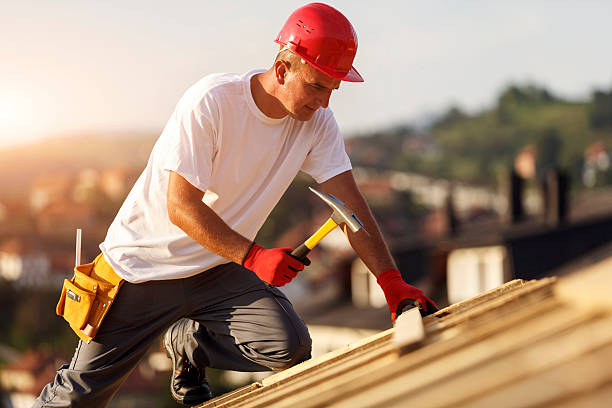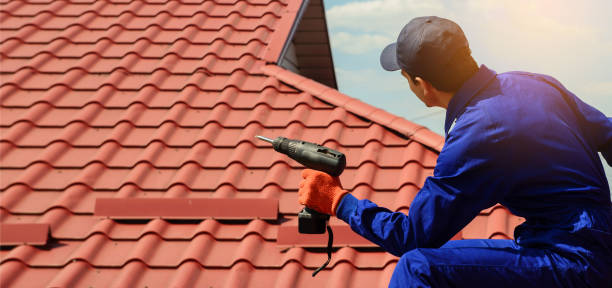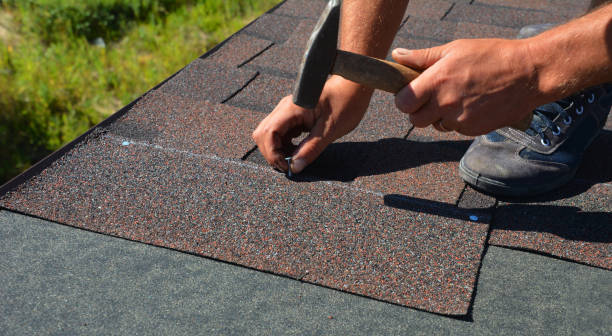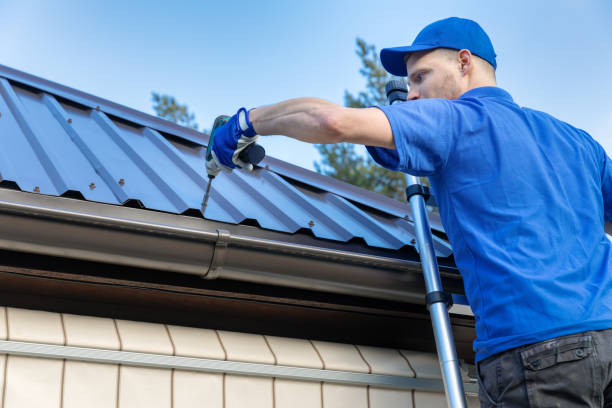
Replacing a roof is a significant investment and an essential part of maintaining the structural integrity and value of your home. Following three key steps can ensure your roof replacement project runs smoothly, stays on-budget, and results in a durable, high-quality roof.
Thorough Roofing Repair Minneapolis Minnesota Inspection and Assessment
- Shingle Damage: Look for curling, cracking, or missing shingles.
- Leaks and Water Stains: Check for water damage on ceilings or in the attic.
- Structural Weaknesses: Inspect for sagging areas that might indicate compromised decking.
- Age of the Roof: Most asphalt shingles last 20–25 years; older roofs often require replacement.
Engage a licensed roofing contractor to provide an accurate assessment. They can also identify underlying issues such as rot or mold that may need addressing during the replacement process.
Plan Your Roofing Minneapolis Minnesota Project with the Right Materials and Contractor
Choosing Roofing Materials: Select materials based on durability, aesthetic appeal, energy efficiency, and budget constraints. Common options include:
| Material | Lifespan | Benefits | Cost | |—————–|——————|————————————————————|————| | Asphalt Shingles| 20–25 years | Affordable; Available in various styles/colors | Low | | Metal Roofing | 40–70 years | Durable; Energy-efficient; Fire-resistant | Moderate | | Tile Roofing | 50+ years | Long-lasting; Ideal for warmer climates | High | | Slate | 75–100 years | Elegant appearance; Extremely durable | Very High |
Hiring the Right Contractor: Research local roofing contractors with strong reputations. Look for:
– Proper licensing and insurance – Positive client reviews – Detailed quotes with clear timelines – A warranty on both materials and workmanship
Obtain multiple estimates to compare costs without compromising quality.
Oversee Roof Installation Minneapolis Minnesota and Manage Post-Replacement Maintenance
- Roof Removal: Old materials will be stripped away to expose the decking.
- Deck Repair (if necessary): Any damaged areas found during removal will be repaired.
- Underlayment Installation: A water-resistant underlayment is added for protection against moisture.
- New Materials Installation: Shingles, tiles, or metal panels are installed securely according to manufacturer guidelines.
- Conduct a final walk-through inspection with your contractor.
- Verify debris removal from your property (e.g., nails or leftover materials).
- Review warranty details to understand coverage terms.
Additionally, schedule routine maintenance every few years to extend the life of your new roof.
By following these three essential steps—inspection, planning/material selection, and proper oversight—you’ll set yourself up for a stress-free roof replacement that stands strong against time and weather conditions alike.
Identifying When to Call Roofing Repair Contractors Minneapolis Minnesota for a Roof Replacement
Understanding when it’s time to replace your roof can save you from costly repairs and potential damage to your home. While some roofing issues may be repaired, others signal the need for a complete replacement. Below are the most common signs that indicate your roof might need attention.
1. Aging Roof
- Most roofs have a lifespan of 20-30 years depending on the materials used.
- Asphalt shingles, for instance, tend to last around 20 years, while metal or tile roofs can last longer.
- If your roof is approaching or has surpassed its expected lifespan, it may be time to consider a replacement.
2. Visible Damage to Shingles
Damaged shingles are often one of the earliest signs of roofing problems:
– Cracked, curled, or buckling shingles indicate wear and tear.
– Missing shingles leave parts of your roof exposed to water damage.
– Shingles with granule loss (noticeable as bald spots) can lead to weakened protection against weather elements.
3. Leaks and Water Damage Inside Your Home
Water intrusion is one of the most obvious indicators that you may need a new roof:
– Look for water stains on ceilings or walls inside your home.
– Pay attention to musty odors that could suggest mold growth due to trapped moisture in your attic or insulation.
If leaks persist after minor repairs, this could signify widespread issues requiring a replacement.
4. Sagging Roof Structure
A sagging roof suggests structural concerns:
– It may result from prolonged exposure to moisture, which affects underlying components such as rafters and decking boards.
– A sagging appearance often points toward severe damage that cannot be addressed through simple repairs.
5. Excessive Granules in Gutters
When cleaning gutters, excessive amounts of granules from asphalt shingles indicate deterioration:
| Indicator | Possible Cause | Next Step | |——————————-|———————————-|——————————-| | Large buildup in gutters | Aging shingles or storm damage | Schedule an inspection | | Missing granules on shingles | UV wear or physical impact | Possible partial replacement |
Granule loss reduces the effectiveness of shingles and makes them more vulnerable to weather-related damages.
6. Increased Energy Bills
Rising energy costs without other discernible causes might point toward poor roof insulation:
– Damaged roofs can create gaps where air escapes, forcing HVAC systems to work harder. – Proper ventilation and roofing materials help regulate indoor temperatures efficiently.
When Should You Contact a Professional?
Homeowners often overlook early warning signs until damages worsen significantly. It’s essential to schedule routine inspections with licensed roofing professionals who can assess potential problems before they escalate.
By recognizing these common indicators early on, you can plan for necessary replacements proactively rather than reacting after significant damage occurs—saving time and money in the process while protecting your home for years ahead.
How to Choose the Best Roofing Repair Service Minneapolis Minnesota for Your Home
Selecting the right roofing materials is a critical decision that affects not only the aesthetic appeal of your home but also its durability, energy efficiency, and resale value. With so many options available in the market, homeowners should carefully evaluate their choices with the help of a professional Minneapolis roofing contractor https://www.johnsonexteriors.org/minneapolis-mn-roofing-contractors to ensure they meet both functional and stylistic needs. Below is a guide to help you choose the best roofing materials for your home.
Factors to Consider When Choosing Roofing Materials
- Your local climate plays a significant role in determining which roofing material will perform best.
- For areas with heavy snowfall or rain, metal roofs or asphalt shingles are excellent choices due to their water-shedding properties.
- Hotter climates benefit from materials like clay tiles or reflective metal roofs that help reduce heat absorption.
- Asphalt shingles: Affordable and widely available (typically $3–$5 per square foot).
- Metal roofing: Mid-range option with costs ranging from $6–$12 per square foot depending on type and thickness.
- Slate or clay tiles: Premium options costing $10–$30 per square foot but offering unmatched longevity.
- Colonial homes pair well with traditional slate or asphalt shingles.
- Mediterranean-style homes often use terra cotta or clay tiles for an authentic look.
- Modern designs benefit from sleek metal panels or flat synthetic materials.
- Consider how long you want your roof to last before needing replacement:
| Material | Average Lifespan | Maintenance Requirements | |——————|————————|———————————-| | Asphalt Shingles | 20–30 years | Minimal maintenance | | Metal Roofing | 40–70 years | Occasional cleaning | | Clay Tiles | 50+ years | Periodic inspection of tiles | | Slate | 75–100+ years | High upkeep; prone to breakage |
Popular Types of Roofing Materials
- Pros: Cost-effective, easy installation, versatile design options.
- Cons: Shorter lifespan compared to premium materials; less eco-friendly.
- Pros: Extremely durable, lightweight, recyclable, offers energy efficiency due to reflective properties.
- Cons: Higher upfront cost; can be noisy during rain unless properly insulated.
- Pros: Fire-resistant, long-lasting, adds a timeless look.
- Cons: Heavy material requiring substantial structural support; high cost.
- Pros: Natural beauty; highly durable against extreme weather conditions.
- Cons: Expensive installation process and heavy weight needing reinforced framing.
- Pros: Eco-friendly (if sourced sustainably), unique rustic charm.
- Cons: Requires regular maintenance; prone to mold/rot in humid climates.
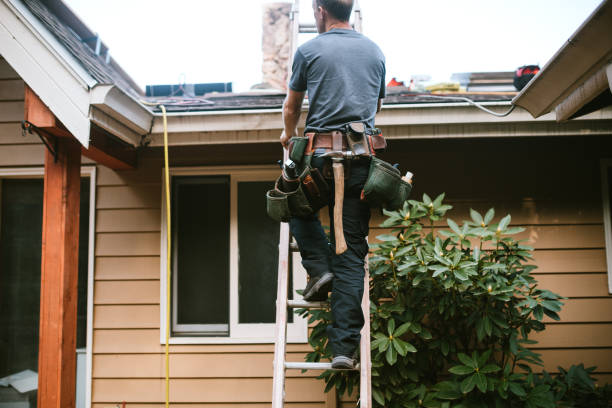
Tips for Making the Final Decision
- Consult with a professional roofer who has extensive experience working with different materials specific to your region.
- Factor in long-term costs such as maintenance or potential repairs alongside initial installation expenses.
- If sustainability is important to you, consider eco-friendly options such as recycled metal roofs or solar-integrated shingles.
A well-chosen roofing material not only protects your home but also enhances its curb appeal and energy efficiency for years to come—a decision worth taking time over carefully evaluating all factors above.
What to Expect from a Roofing Repair Company Minneapolis Minnesota During Installation and Inspection
A roof replacement is a significant investment in your home’s safety, durability, and overall value. Understanding what happens during the roof installation process and final inspection can help you prepare and ensure the job is done to the highest standards. Below is an in-depth look at what to expect during this critical phase.
1. Preparing for Roof Installation
- Safety Measures: The roofing crew will establish safety protocols, including setting up scaffolding or harnesses if necessary.
- Property Protection: Tarps or protective coverings are placed over landscaping, decks, patios, or other areas to prevent damage from falling debris.
- Removing the Old Roof: In most cases, the old roofing materials will be stripped down to the decking to assess its condition properly.
- Decking Inspection and Repairs: If damaged areas of decking are found (such as rot or warping), they’ll be repaired or replaced before new materials are installed.
2. The Roof Installation Process
- A moisture barrier (felt paper or synthetic underlayment) provides an additional layer of protection against water leaks.
- Flashing around chimneys, vents, and other protrusions will be installed or replaced to prevent water intrusion in vulnerable areas.
- Shingles (or other roofing materials) are applied starting at the bottom edge of the roof and working upward in overlapping rows for maximum coverage.
- Proper vents will be installed along ridges and eaves to regulate attic temperature and prevent moisture buildup over time.
- Sealants may be applied around flashing areas for added protection against leaks.
3. What Happens During a Final Roof Inspection?
- Are all shingles properly aligned?
- Is flashing securely installed around penetrations?
- Are ventilation systems functioning as intended?
- Any visible signs of sagging or improper weight distribution across the roofline will be checked.
- The contractor should ensure all debris is cleared from your property—including nails which may require magnetized tools for collection.
- You’ll receive documentation on warranties for both materials used and labor provided by the contractor.
Estimated Timeline of Roof Installation Process
| Task | Approximate Time Required |
| Preparation & Tearing Off | 1-2 Days |
| Repairs & Decking | Depending on Extent Needed |
| New Materials Installation | 2-3 Days |
| Final Cleanup & Inspection | Same Day Post Completion |
Actual timelines can vary based on weather conditions, roof size/complexity, material type, and accessibility challenges.
Tips for Homeowners During Installation
- Keep pets and children away from work zones to avoid accidents.
- Communicate regularly with your contractor about progress updates.
- Take photos post-installation for future reference or warranty claims.
Understanding these steps ensures that you know what’s taking place during this process while giving you peace of mind about your investment.
Understanding the Importance of a Detailed Roof Inspection with a Roofing Company Minneapolis Minnesota
A detailed roof inspection and assessment are critical in maintaining the structural integrity of your home. Whether you’re planning routine maintenance, suspect damage after a storm, or are considering a roof replacement, a comprehensive inspection ensures the longevity and safety of your property. Below, we delve into why this step is paramount and what it entails.
Why Is a Roof Inspection Important?
- Preventative Maintenance: Regular inspections can uncover minor issues, such as loose shingles or small leaks, that can be fixed before they cause significant damage.
- Extending Roof Lifespan: Addressing problems early helps maintain the durability of your roofing system.
- Damage Documentation: Professional assessments are essential when filing insurance claims for storm or accidental damage.
- Safety Assurance: Inspections help ensure your roof is structurally sound, protecting occupants from potential hazards.

What Happens During a Roof Inspection?
- Checking for missing, curled, or damaged shingles.
- Inspecting flashing around chimneys, vents, and skylights for signs of wear.
- Looking for moss, algae growth, or debris accumulation that could cause moisture retention.
- Evaluating gutter systems to ensure proper water drainage.
- Spotting water stains or discoloration on ceilings and walls that indicate leaks.
- Identifying areas with insufficient insulation that may lead to energy loss.
- Assessing attic ventilation to prevent moisture buildup and maintain airflow.
Common Issues Identified During Inspections
| Issue | Description | Potential Consequences |
| Missing Shingles | Shingles blown off due to wind or wear over time | Moisture infiltration leading to leaks |
| Damaged Flashing | Cracked or corroded flashing near chimneys or vents | Water ingress into interior structures |
| Poor Drainage | Clogged gutters causing water backup | Water pooling on roofs leading to sagging |
| Mold & Algae Growth | Fungal growth due to trapped moisture | Roof deterioration and structural damage |
When Should You Schedule an Inspection?
Ideally, roofs should be inspected at least twice a year—once in spring and once in fall—or after major weather events such as hailstorms, heavy snowfalls, or hurricanes. Early detection mitigates risks associated with seasonal changes and severe conditions.
Hiring Professionals for Accurate Assessments
While DIY inspections can provide surface-level insights into roofing conditions, professional roofers have the expertise and tools required for detailed evaluations. They bring specialized knowledge about localized weather patterns and construction standards that impact roofing systems.
By investing in regular inspections conducted by licensed professionals—and addressing any emerging issues promptly—you safeguard your home’s long-term value while ensuring peace of mind.
A Comprehensive Guide to Roofing Service Minneapolis Minnesota and the Best Materials
Choosing the right roofing material for your home or building is a critical decision that impacts functionality, energy efficiency, aesthetics, and cost. With numerous options available, understanding the unique benefits of each type of roofing material is essential. This guide provides insights into some of the most common roofing materials and their advantages.
Asphalt Shingles
Asphalt shingles are the most popular roofing material in residential construction due to their affordability and versatility.
Benefits: – Cost-Effective: One of the least expensive options available. – Variety: Comes in a wide range of colors and styles to suit different architectural designs. – Durability: Lifespan ranges from 15-30 years with proper maintenance. – Ease of Installation: Quick and simple installation process compared to other materials.
Metal Roofing
Metal roofs are gaining popularity due to their longevity and resistance to extreme weather conditions.
Benefits: – Longevity: Can last 40-70 years depending on the metal type (e.g., steel, aluminum, copper). – Energy Efficiency: Reflects solar heat, reducing cooling costs during warmer months. – Environmentally Friendly: Often made from recycled materials and fully recyclable at the end of its life. – Low Maintenance: Requires minimal upkeep over its lifespan.
| Metal Type | Key Features | Estimated Lifespan |
| Steel | Durable but prone to rust if not coated | 40–50 years |
| Aluminum | Lightweight and corrosion-resistant | 50–60 years |
| Copper | Highly durable with natural patina | 70+ years |
Clay and Concrete Tiles
Clay and concrete tiles are known for their exceptional durability and timeless appeal.
Benefits: – Durability: Resistant to fire, decay, and insect damage; lifespan often exceeds 50 years. – Aesthetic Appeal: Offers a classic look that complements Mediterranean, Spanish, or Southwestern-style homes. – Energy Efficiency: Excellent thermal properties that help regulate indoor temperatures. – Weather Resistance: Performs well in hot climates but can also withstand heavy rain or snow when appropriately installed.
Considerations: These tiles are heavy and may require structural reinforcement before installation.
Wood Shakes and Shingles
Wood roofing provides a natural look often preferred for rustic or traditional homes.
Benefits: – Aesthetic Charm: Offers a warm, textured appearance that becomes more appealing with age. – Sustainability: Made from renewable resources such as cedar or redwood. Some manufacturers offer eco-friendly options sourced through sustainable forestry practices. – Insulation Properties: Naturally insulating material helps maintain comfortable indoor temperatures.
However, wood requires regular maintenance to protect against mold, rot, or insect damage.
Slate Roofing
Slate roofs represent one of the most premium choices due to their elegance and unmatched durability.
Benefits: – Lifespan: Can last over 100 years if properly maintained. – Fire Resistance: Naturally non-combustible material adds an extra layer of safety. – Appearance: Provides a sophisticated look suitable for high-end homes or historic restorations.
Despite these benefits, slate is heavy and costly compared to other materials.
Synthetic Roofing Materials
Synthetic options like rubber slate or polymer-based shingles aim to replicate traditional materials while improving functionality.
Benefits: – Affordability Without Compromise on Appearance: Mimics wood or slate at a fraction of the price. – Lightweight Design: Requires no structural reinforcement during installation. – Durable Performance Against Weather Elements
Selecting the right material depends on your budget, aesthetic preferences, climate considerations, and long-term maintenance needs. By weighing these factors carefully alongside professional guidance from your roofer, you can ensure an informed decision suited for your property’s requirements.
- Three Essential Steps to Hiring Roofing Contractors Minneapolis Minnesota for a Successful Roof Replacement
- Essential Tips for Finding the Best Roofing Repair Service Minneapolis Minnesota
- Key Factors to Consider When Choosing Roofing Repair Contractors Minneapolis Minnesota
- The Importance of Hiring Roofing Contractors Minneapolis Minnesota for Quality Work
- 10 Things to Know Before Hiring Roofing Repair Contractors Minneapolis Minnesota
- 6 Important Factors to Consider When Choosing a Roofing Repair Service Minneapolis Minnesota
- Essential Steps for Choosing a Roofing Repair Service Minneapolis Minnesota Homeowners Can Trust

